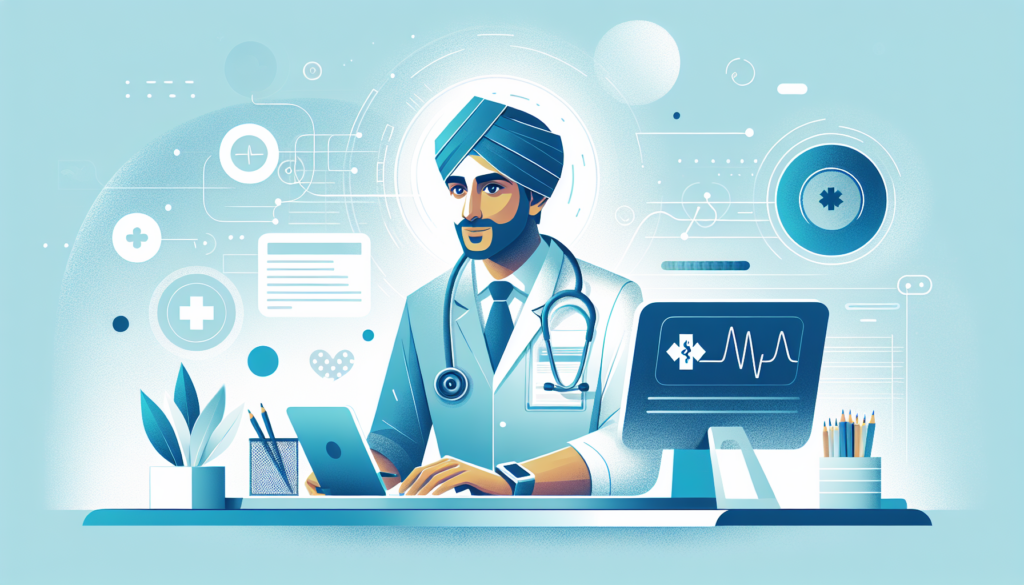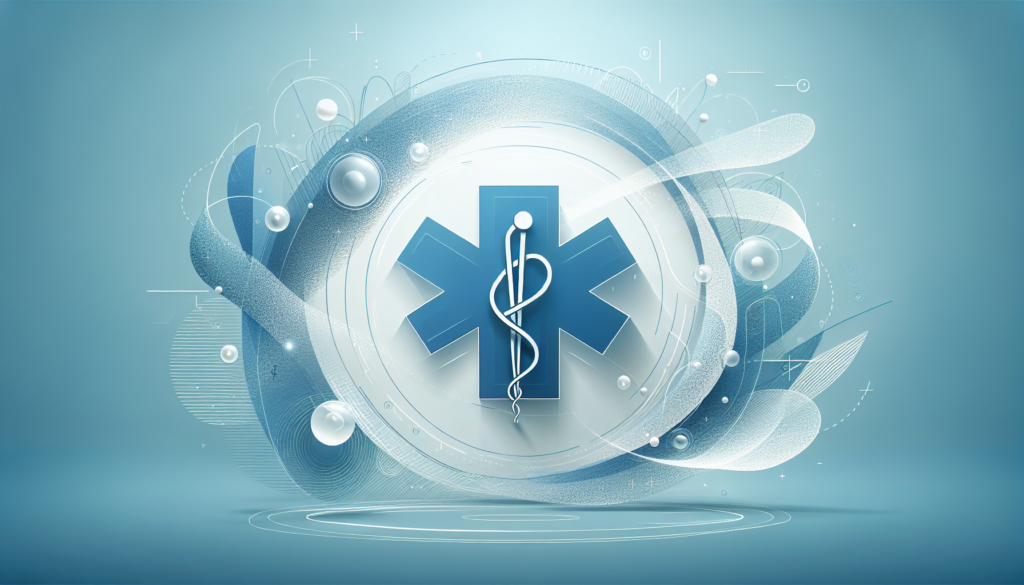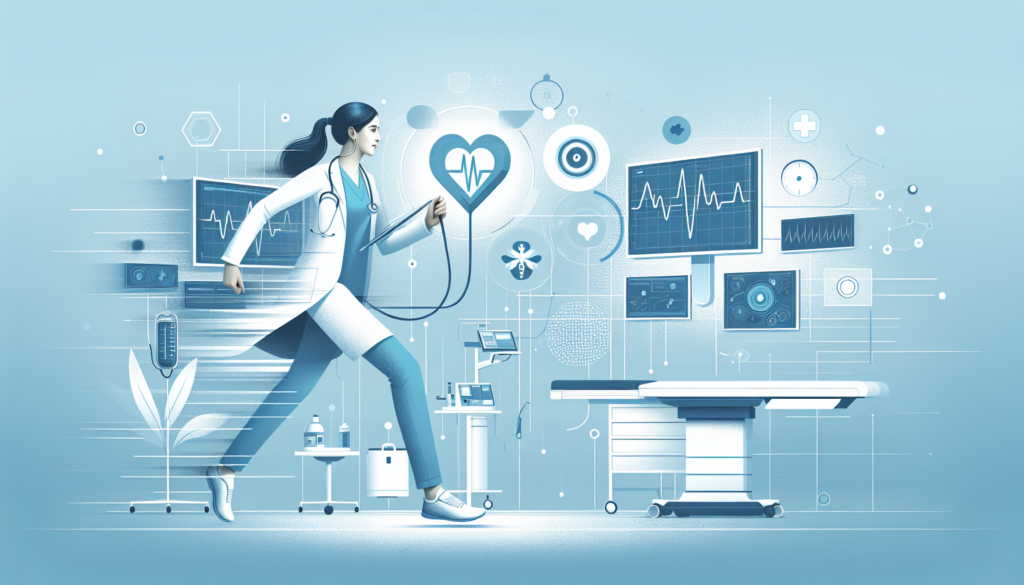Understanding the 3 Main Types of Health Records
In the landscape of healthcare, maintaining meticulous records is paramount for patient care, legal compliance, and efficient operations. There are three primary types of health records that medical professionals use to store and manage patient information: Electronic Health Records (EHRs), Personal Health Records (PHRs), and Medical Health Records (MHRs). Each serves a distinct purpose, garners unique benefits, and presents specific challenges. Let’s unpack these types so that healthcare providers can leverage them effectively and optimize the patient encounter, with a focus on how digital tools like AI-powered scribes can enhance their utility.
Firstly, Electronic Health Records (EHRs) are the digital evolution of patients’ paper charts. These comprehensive records provide a real-time, patient-centered documentation that makes health information available instantly and securely to authorized users. Unlike its predecessor, the paper chart, EHRs contain a patient’s medical history, diagnoses, medications, treatment plans, immunization dates, allergies, radiology images, and laboratory test results. They facilitate better health care by allowing the instantaneous sharing of information between different healthcare settings, such as laboratories, specialists, medical imaging facilities, pharmacies, emergency facilities, and school and workplace clinics.
Personal Health Records (PHRs), on the other hand, are health records where that is maintained and managed by the patient. A PHR is designed to provide a complete and accurate summary of an individual’s medical history which is accessible online. PHRs can help in capturing the split between healthcare provider data and the health information patients collect themselves, such as diet, exercise logs, or home-monitored blood pressure readings. As such, PHRs empower patients to take control of their health information and collaborate more closely with their caregivers, potentially bridging the gap in patient-provider communication.
Lastly, Medical Health Records (MHRs), often referred to as medical charts, are the official health documents that record the course of a patient’s clinical management. They include a chronological study of patient’s case notes, including symptoms, examinations conducted, test results, responses to treatments, and interaction with healthcare professionals. MHRs are typically used within healthcare organizations to facilitate diagnosis and treatment, manage hospital care with efficiency, and comply with the health insurance policies for claims and reimbursements. The meticulous documentation in MHRs can be critical for defending against medical malpractice allegations and ensuring regulatory compliance.
| Type of Health Record | Purpose | Key Features | User |
|---|---|---|---|
| Electronic Health Records (EHRs) | Streamline the exchange of patient information among different healthcare settings | Real-time, digital charts; accessible by authorized personnel | Healthcare providers |
| Personal Health Records (PHRs) | Empower patients to manage their health data for collaboration with healthcare providers | Online patient-managed data; includes provider and self-monitored health information | Patients |
| Medical Health Records (MHRs) | Document a patient’s clinical care for treatment management, legal, and insurance purposes | Chronological case notes; used within healthcare organizations | Healthcare professionals |
The Role and Features of Electronic Health Records (EHRs)
Electronic Health Records (EHRs) are at the forefront of modernizing healthcare by providing a structured, digitized version of patients’ paper charts. These comprehensive records offer a myriad of benefits, most prominently their facilitation of streamlined care delivery. With the shift towards value-based care, EHRs play a pivotal role in enhancing the quality of healthcare services while simultaneously striving to reduce costs. They are designed not only to contain or transmit information but also to support healthcare providers in decision-making processes. By doing so, EHRs actively contribute to improved health outcomes by enabling evidence-based patient care at the point of care.
EHR systems come equipped with various functional capabilities that can significantly boost the efficiency and accuracy of medical practice. At the core, they allow the recording of patient data such as demographics, medical history, medication, allergies, radiology images, and lab results. In addition, they often include features that support clinical practice, such as:
– **Computerized physician order entry (CPOE):** Allows for the electronic entry of medical orders for patient care.
– **Clinical decision support:** Provides reminders and alerts to guide evidence-based clinical decisions.
– **e-Prescribing:** Facilitates the sending of prescriptions electronically to pharmacies.
– **Secure messaging:** Enhances communication among healthcare providers and between providers and patients.
Furthermore, the ability of EHRs to integrate with a wide array of clinical systems and devices ensures that patient records are both comprehensive and up-to-date, which is essential for delivering coordinated care. This integration supports the sharing of healthcare information across different healthcare settings, a feature that promotes interoperability. Such seamless exchange is crucial for fostering collaboration among multidisciplinary teams and for facilitating transitions in care, ultimately underpinning the continuity of patient care.
The dynamic nature of healthcare is mirrored in the sophisticated data analytics capabilities of advanced EHR systems. Leveraging big data in healthcare, EHRs can analyze trends, track quality and performance metrics, and predict patient outcomes. This analytical prowess not only empowers providers with actionable insights but also enriches the strategic planning and management within healthcare organizations. Additionally, when it comes to regulatory compliance and reporting, EHR functionality greatly simplifies the preparation of reports for various healthcare policies and programs, thereby easing the administrative load on healthcare providers.
– **Data analytics and reporting:** Supports healthcare strategic planning and ensures compliance with health policies.
– **Patient portals:** Provides patients with access to their health information, encouraging active participation in their care.
– **Health information exchange:** Easily transmits patient information across different care settings, essential for integrated care processes.
– **Population health management:** Assists in managing and improving the health of patient populations.
The accumulation of these features of EHRs underscores their integral role in the healthcare landscape, one that Scribemd.ai can seamlessly augment by interfacing with such digital systems. The result is a synergistic collaboration that maximizes both the clinical and operational efficacy of healthcare services.
Personal Health Records (PHRs): Empowering Patient-Centered Care
In an era where patient empowerment and engagement are paramount, Personal Health Records (PHRs) have emerged as a crucial tool in achieving patient-centered care. By definition, PHRs are health documents that are initiated and maintained by an individual. Unlike traditional medical records controlled by healthcare providers, PHRs put the power in the hands of patients, giving them a platform to store, track, and share their health information at their discretion. This patient-managed model fosters a new level of involvement in one’s health journey, promoting better communication between patients and healthcare providers and contributing to more informed decision-making.
PHRs are not merely digital filing cabinets for medical records; they are dynamic tools that can transform the healthcare experience. Let’s consider the multifaceted benefits they bring to patient care:
– **Convenience:** Accessibility to health information regardless of time or location.
– **Comprehensiveness:** Integration of various health data, including but not limited to medical history, medication lists, allergies, and test results.
– **Communication:** Facilitation of smoother information flow between different healthcare entities.
– **Control:** Empowering patients to manage their health data and contribute to its accuracy.
By enhancing these facets of healthcare, PHRs play a pivotal role in tailoring treatments and healthcare plans to the individual, driving the essence of personalized medicine.
From the standpoint of data management, the structure of PHRs strikes a balance between comprehensive chronicling and user-friendly interfaces. They afford patients the ability to log daily health-related activities, such as exercise, diet, and blood pressure readings, which are invaluable for managing chronic conditions. Health trends can be tracked and visualized, enabling patients to notice and act upon changes in their health status more swiftly. Furthermore, advanced PHR systems incorporate decision-making tools which can alert patients about important health maintenance steps, such as vaccinations and screenings, based on their unique health profiles.
Crucially, PHRs also enhance security and privacy by allowing patients to determine the extent of information they share and with whom. Customized privacy settings enable users to grant access to selected health professionals, family members, or caretakers, tightening the circle of trust around sensitive health information. This aspect of PHRs respects patient autonomy and confidentiality, which are core tenets of modern healthcare ethics. As we move towards a future where AI-powered digital scribe solutions like Scribemd.ai further integrate with PHR systems, the potential for streamlined documentation and enhanced patient-doctor interactions is immense.
Paper-Based Records: Navigating the Traditional Documentation System
In the digital era, it might seem anachronistic that many healthcare providers still rely on paper-based records. However, this traditional documentation system is deeply ingrained in medical practice for a variety of reasons, ranging from established comfort with manual entries to the tangible security of physical documents. Navigating through stacks of paper charts requires an understanding of the system’s inherent organization, which can be as varied as the practitioners who maintain them. Typically, patient records are categorized by date or patient name, with individual notes documenting each visit, diagnosis, treatment, and follow-up.
For those accustomed to the digital convenience of a click or a tap, the handling of paper records demands a meticulous approach. As one maneuvers through handwritten charts, a keen eye for detail is critical to prevent overlooking vital patient information. Indeed, accuracy is paramount, as the data is used for ongoing patient care, coding for billing, and maintaining historical medical information. It is also worth noting that with a physical documentation system, issues like legibility and proper filing become significant concerns that could lead to serious errors or delays in patient care.
- Deep-rooted in the healthcare system
- Organized by date or patient name
- Demands meticulous, detail-oriented handling
- Legibility and filing accuracy are crucial
The healthcare sector recognizes the need for meticulous management of patient information, which includes not only effective filing systems but also adherence to stringent privacy regulations. For instance, the Health Insurance Portability and Accountability Act (HIPAA) in the United States imposes strict rules for the handling and sharing of medical records. Providers must ensure that their paper-based systems have robust safeguards to protect sensitive patient data from unauthorized access or breaches. Accessibility is another challenge; paper records can be accessed by only one person at a time, potentially causing bottlenecks, whereas digital records can support simultaneous access for multiple users.
Despite the challenges, some healthcare settings persist with paper-based documentation, often due to financial constraints or infrastructure limitations that preclude a switch to electronic systems. Furthermore, in areas with unstable internet connectivity or during periods of technical difficulties, paper records provide a fail-safe mechanism, ensuring that patient care can continue without interruption. As medical settings grapple with the demands of comprehensive record-keeping, the legacy of paper-based documentation persists, embodying the tension between technological progress and traditional practice.
- Requires strict adherence to privacy regulations
- Accessibility can lead to operational bottlenecks
- Financial and infrastructural constraints influence retention of paper systems
- Acts as a fail-safe during technological disruptions
Integrating Technology: The Transition from Paper to Digital Records
The healthcare industry has experienced a monumental shift with the ongoing transition from paper-based records to digital documentation. Adopting electronic health records (EHRs) is not just about converting paper files into digital format; it represents a fundamental change in how healthcare providers collect, access, and use patient information. The integration of technology into medical record-keeping has crucial implications for improving healthcare quality, increasing patient safety, and ensuring the privacy and security of health information. By embracing digital records, medical professionals can enhance their workflow, reduce the risk of errors, and enable better communication across the care continuum.
To successfully navigate the transition, healthcare providers must consider key facets of the process. First among them is the selection of the appropriate EHR system, which must align with the specific needs of the practice. Training and support are equally important, as they facilitate a smoother transition by empowering healthcare providers and staff with the necessary skills and knowledge. On top of that, there’s a need to establish comprehensive data migration strategies to ensure that the existing patient records are accurately and securely transferred to the new digital system.
- Selection of suitable EHR system tailored to practice needs
- Training and ongoing support for healthcare providers and staff
- Effective data migration strategies for secure transfer of patient records
Moreover, the integration of advanced AI-powered tools, like ScribeMD, into EHRs is taking the digitization of medical records a step further. These tools are revolutionizing the way healthcare professionals interact with patient data by automating the medical note-taking process. Not only does this alleviate the administrative burden on clinicians, allowing them more time to focus on patient care, but it also improves the accuracy of medical records. Furthermore, the real-time documentation and rapid response capabilities of AI-fuelled systems contribute to enhanced clinical decision-making and elevated patient outcomes.
- Use of AI-powered tools for automated medical note-taking
- Reduction in administrative workload for clinicians
- Improved accuracy and real-time updates of medical records
The journey from paper to digital records is pivotal to the future of healthcare. It involves careful planning, a strategic approach, and the adoption of trailblazing technologies that synergize with healthcare providers’ commitment to patient care. As electronic documentation becomes the norm, the healthcare community must continue to develop and invest in these digital tools to ensure that they meet the ever-evolving challenges of the medical field. Ultimately, the goal is to foster an environment where technology enhances healthcare delivery without impeding the human touch that is essential to patient-centered care.
- Strategic approach to the transition from paper to digital records
- Commitment to the continuous development of digital tools
- Enhancing healthcare delivery while maintaining the human aspect of patient care



